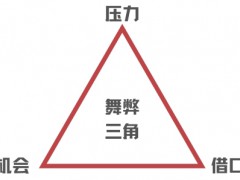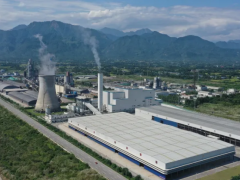据油价网5月22日报道,油价创历史新高,夏季开始时美国柴油短缺迫在眉睫,以及欧佩克的态度可能是世界各国政府官员头疼的原因。但事实上,这些都是能源行业深层次问题的表现。
在过去十年左右的时间里,欧洲,以及规模较小但同样重要的北美,都把减少对化石燃料的依赖,增加对可再生能源的依赖作为自己的使命。
沙特阿拉伯石油部长今年早些时候警告称,石油和天然气投资不足将对消费产生回弹效应,而他并不是唯一这样想的人。许多欧佩克官员也发出了同样的警告,但显然无济于事。毕竟,正是国际能源署去年表示,世界不需要新的石油和天然气勘探,因为我们将不再需要新的石油或天然气供应。
当然,仅仅几个月后,国际能源署就改变了论调,呼吁欧佩克增加产量,这表明了能源行业的一个严峻现实:你不可能在几个月的时间里逆转已经持续多年的进程。
发现率低
新发现石油和天然气的平均速率在某种程度上相当于太阳能电池板的平均转换率——这是一个很少被提及的话题——远低于30%。
彭博社最近报道称,壳牌在巴西近海钻探的三口井已经干涸。这家超级石油巨头为获得该地区的开采权支付了10亿美元,花了三年时间进行钻探,却空手而归。埃克森美孚也未能开发其巴西区块的任何重要石油储备,这让它损失了16亿美元。
这一消息突显出,即便是在巴西这样的地方,油气勘探也存在风险。巴西一直被吹捧为油气行业的下一个热点,可能会与圭亚那并立。巴西因其丰富的盐下带而吸引了许多大型石油公司,但正如一位当地能源顾问告诉彭博社的那样,当发现率接近100%时,真正重大的有效发现早已收回。
然而,据彭博社报道,油气行业的平均成功发现率远低于这个数字,为24.8%。而且,有待发现的重大发现越来越少了。
生产成本上涨
在很大程度上由能源价格飙升推动的更广泛的通胀趋势,并未超越能源行业本身。在美国页岩地区,生产成本上升了20%左右。大陆资源公司和赫斯公司最近警告称,它们第二季度的成本将会上升,而且它们远不是唯一面临成本上升的公司。
压裂砂和今年早些时候油井用钢管等原材料的短缺,是生产成本上涨的一个原因,不仅是在页岩地区,而且是在油田使用这些原材料的所有地方。劳动力短缺也是美国页岩地区面临的一个特殊问题,这也推高了生产成本。疫情遗留下的供应链问题也是原因之一。
更大的问题是,正如Argus最近援引油气行业高管的话报道的那样,该行业也不认为未来几个月会有任何缓解。当联邦政府确实需要更多的石油和天然气时,生产成本紧缩出现了,这可能是最糟糕的时刻,因为它阻止了钻井公司进一步增加新钻井的开支。
网络攻击
过去几年,随着网络攻击大幅增加,网络安全已成为能源行业关注的一个问题。从网络安全的角度来看,科洛尼尔管道黑客事件确实帮助对解决网络安全问题有所帮助,但似乎没有什么后续行动。
挪威风险评估和质量保证咨询公司DNV本周进行的一项全新调查显示,石油行业对网络威胁相当不安,更糟糕的是,并没有真正准备好应对这些威胁。
根据这项研究,84%的高管预计网络攻击将导致能源资产的物理损失,而超过一半54%的高管预计网络攻击将导致人员伤亡。大约74%的受访者预计网络攻击会造成环境破坏。只有30%的人知道如果他们的公司成为这种攻击的目标该怎么办。
季廷伟 摘译自 油价网
原文如下:
Five Major Challenges Facing The Energy Industry
Record-high prices at the pump, a looming diesel shortage right when the summer season is starting, and an uncooperative OPEC are probably reasons for many headaches among government officials around the world. Yet these are, in fact, manifestations of deeper problems in the energy industry.
Underinvestment In the past decade or so, Europe and, to a lesser but no less significant extent, North America, have made it their mission to reduce their reliance on fossil fuels and increase their reliance on renewable energy.
This has spurred an investor exodus from oil and gas and the emergence of the so-called ESG investing trend. Money for new oil and gas developments has become more difficult to tap as banks join the ESG movement, and companies have had to cut back on spending.
Saudi Arabia's oil minister warned that underinvestment in oil and gas would have a boomerang effect on consumers earlier this year, and he is not the only one. Many OPEC officials have made the same warning but, apparently, to no avail. After all, none other than the International Energy Agency said last year the world does not need new oil and gas exploration because we won't be needing any more new oil or gas supply.
Of course, it was only a few months later that the IEA changed its tune, calling on OPEC to boost production, and it demonstrated one of the harsh realities of the energy industry: you cannot reverse a process that has been going on for years in a matter of months.
Low discovery rates
A topic that doesn't get much talked about, the average rate of new oil and gas discoveries is, in a way, comparable to the average conversion rate of solar panels: it is well below 30 percent.
Bloomberg recently reported that three wells that Shell had drilled offshore Brazil had come up dry. The supermajor had paid $1 billion for drilling rights in the area and had spent three years drilling to come up empty-handed. Exxon had also failed to tap any significant oil reserves in its Brazilian blocks, which cost it $1.6 billion.
The news highlights the risky nature of oil and gas exploration even in places like Brazil, which has been touted as the next hot spot in the industry, probably alongside Guyana. Brazil has become a magnet for supermajors because of its prolific presalt zone, but, as one local energy consultant told Bloomberg, the big discoveries have already been made—back when the discovery rate was close to 100 percent.
The average successful discovery rate for the oil and gas industry is much lower than that, however, at 24.8 percent, according to Bloomberg. And there are fewer and fewer big discoveries to be made.
Production cost inflation
Broader inflation trends, in large part driven by soaring energy costs, have not passed the energy industry itself. In the U.S. shale patch, production costs have risen by some 20 percent.
Two companies recently warned they would be reporting higher costs for their second quarters, Continental Resources and Hess Corp, and they are far from the only ones experiencing these higher costs.
Shortages of raw materials such as frac sand and, earlier this year, steel piping for wells, are one reason for the production cost inflation, not just in the shale patch but everywhere where these raw materials are used in oil fields. A shortage of labor is a special problem for the U.S. shale patch, too, helping to drive production costs higher. Lingering supply chain problems from the pandemic are also in the mix.
The bigger problem is that the industry is not expecting any respite in the coming months, either, as Argus recently reported, citing oil and gas executives. The production cost squeeze comes at a time when the federal government really needs more oil and gas, which is probably the worst possible time as it has discouraged drillers further from spending more on new drilling.
Cyberattacks
Cybersecurity has become a cause for concern in the energy industry in the past few years as cyberattacks have multiplied significantly. The Colonial Pipeline hacking really helped out things in perspective on the cybersecurity front, but little action followed, it seems.
A brand new survey by DNV, the Norwegian risk assessment and quality assurance consultancy, revealed this week that the industry is quite uneasy about cyberthreats and, what's worse, not really prepared to handle them.
According to the study, 84 percent of executives expect cyberattacks will lead to physical damage to energy assets, while more than half—54 percent—expect cyberattacks to result in the loss of human life. Some 74 percent of the respondents expect environmental damage as a result of a cyberattack. And only 30 percent know what to do if their company becomes a target of such an attack.
免责声明:本网转载自其它媒体的文章及图片,目的在于弘扬石化精神,传递更多石化信息,宣传国家石化产业政策,展示国家石化产业形象,参与国际石化产业舆论竞争,提高国际石化产业话语权,并不代表本网赞同其观点和对其真实性负责,在此我们谨向原作者和原媒体致以崇高敬意。如果您认为本站文章及图片侵犯了您的版权,请与我们联系,我们将第一时间删除。







